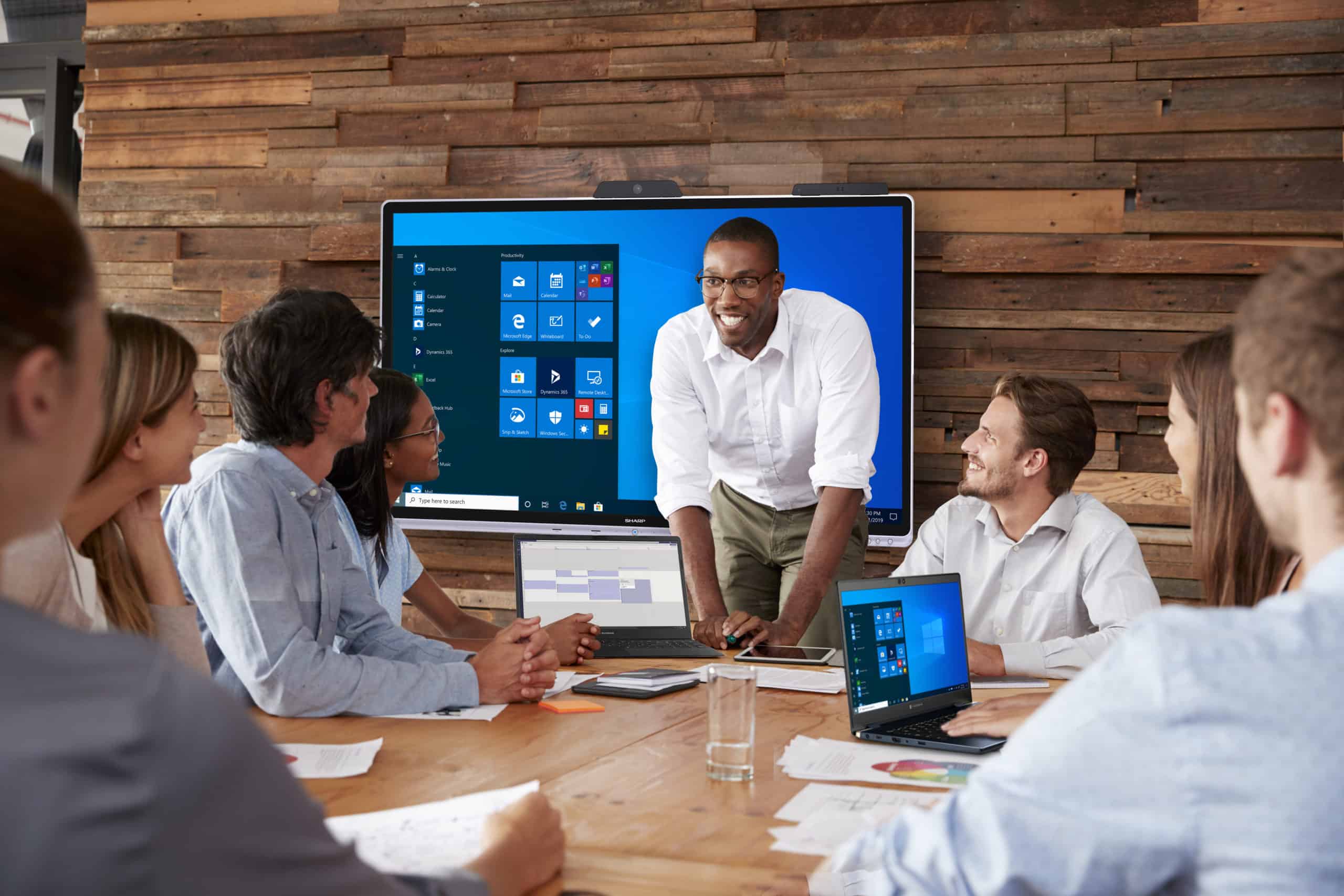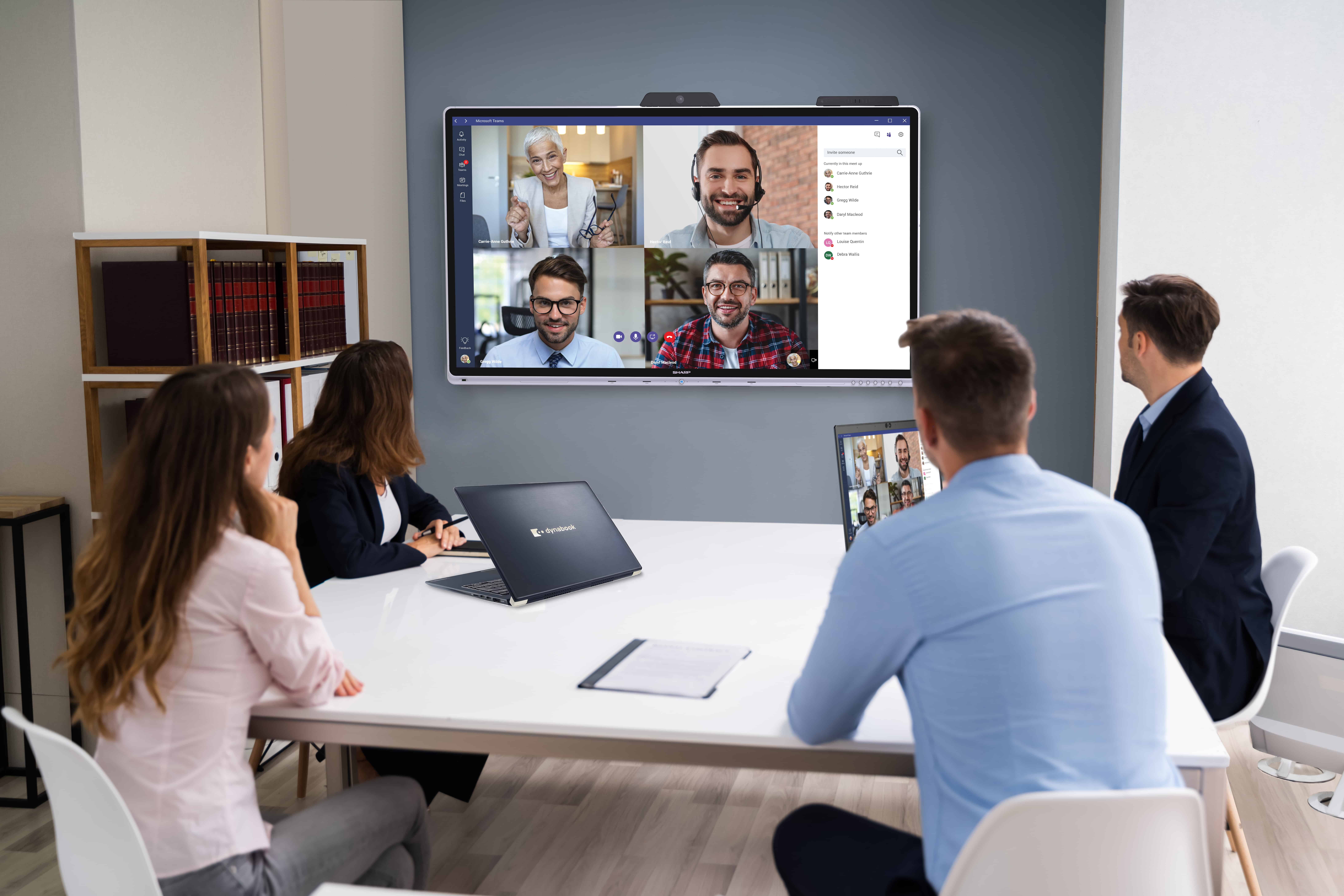Employees are less inclined to spend the time and expense to travel to the office if it doesn’t have effective tools and workspaces. Hybrid work experts discuss today’s expectations of the hybrid workplace and how to meet them in a recent AVNetwork Roundtable featuring:
- Joe Armeli, AVI-SPL Sales Director, Central Region
- Elyse DiNome, Sharp Electronics, Project Management Specialist
- Dusty Duistermars, former Managing Director, Partner Product Strategy & Innovation, JLL Technologies
The webcast was moderated by Cindy Davis, Brand and Content Director, AV Technology and brought to you by AVNetwork and Sponsored by AVI-SPL
If you’re refining or rethinking your hybrid spaces, hear what industry leaders have to say about the modern office.
AVNetwork talked to experts from AVI-SPL, Sharp Electronics, and JLL Technologies in one of our latest webcasts.

Hybrid work is here to stay
Companies are embracing–or at least accepting–that hybrid work is effective and that employees like the flexibility. Executives and technology managers quickly enabled remote work during the pandemic, so they’re now busy refining and even rethinking some of the technology and workspace decisions they had to make under pressure.
They’re reconsidering decisions like replacing all individual desks with collaboration spaces. Companies are now trying to strike a balance between various options in today’s hybrid office.
Additionally, employees are satisfied with working at home, so they have high expectations when they go to the office. They want technology that works and has more capabilities than they have at home.
Unfortunately, many offices still lack the tools to make office work worthwhile. For example, if employees travel to the office just to video conference with their peers from their laptops–just as they would do from home–they’re going to wonder why they had to go at all.
Trends in hybrid work
Organizations are taking a wide variety of approaches to hybrid work and employee expectations. Some are still trying to determine the best hybrid schedule, but experts predict most office workers will spend less than half their time in the workplace.
One trend geared toward meeting expectations is to design spaces that support human experiences. Employers are asking users what is important to them and creating new workspaces around their priorities, which include flexibility and options. The human element also means ensuring spaces are comfortable and supporting employee wellness.
Another important trend that helps make office days worthwhile is incorporating more emerging technologies like virtual reality (VR) and extended reality (XR) tools into the workplace. For example, unfurnished rooms equipped with only VR headsets are a lot different from older meeting rooms, but they may appeal to many users.
Meeting hybrid workplace expectations with technology
The key to handling expectations is to get insights into how employees actually work and get input from them about how they want to work. Also, determine the outcomes you want your workspaces to drive and then equip them so users can achieve those outcomes.
Changing mindsets from relying on old workspace concepts to trying new ones is also important. For example, rather than thinking of rooms in terms of small, medium, and large meeting spaces, they can be used for more flexible uses. However, avoiding extremes like making all spaces the same is essential too.
Other tips for meeting hybrid work expectations include:
- Choose what works for your company. Consider your industry, organization, and employees. There are many ways to succeed at hybrid work.
- Remove technology barriers. Choose tools that are flexible, easy to use, and interoperable.
- Visualize spaces with VR. AVI-SPL lets you see workspace concepts before you build them using VR technology.
Take a flexible approach to hybrid work
Because work and technology continue to change, it helps to view the hybrid workplace as a journey. You won’t meet everyone’s expectations overnight, but you can continue to make progress.
Watch the on-demand AVNetwork Roundtable Panel: Meeting Hybrid Workplace Expectations.

